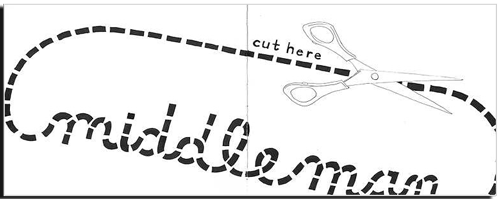B2B eCommerce is growing. Fast. In fact according to one Internet Retailer article B2B online revenue will hit $1.13 trillion in sales worldwide by 20201. This is outpacing retail eCommerce significantly and is creating significant opportunity for manufacturers and other B2B companies to invest in online sales and marketing technology to better serve their clients’ demands. There are a number of factors in today’s business environment that contribute to this critical need to invest in better, more integrated web technologies. If you are unsure about whether it’s worth it to modernize your online technology, or you’re reluctant to set aside the appropriate budget for such an endeavor, this article provides strong reasons why this may be the best opportunity to grow your business and better serve your customers.

If you are a manufacturer, you are probably keenly aware of the industrialization of traditionally ‘3rd-world’ countries. While the quality of this new competition is often lower, the fact is that these manufacturers create downward pressure on prices in the market. And additional competitors never make it easier to keep and gain market share. Ultimately, margins on products are skinnier than they were a decade or two ago. Two major strategies are being considered to combat encroaching lost profitability and market share: cutting costs and going direct-to-consumer.
What many manufacturers have realized is that their technical infrastructure is outdated and their inability to leverage the latest web technology to modernize their business is costing them big. Legacy systems are typically spread across multiple technologies that are difficult and expensive to integrate and maintain. Often times, multiple databases become hard to manage and require manual data entry often by the company’s most valuable employees! Transitioning can be expensive, but modernized systems often reap the benefits of reduced stress and hassle, better customer service, reduced technical and inventory costs, and more agile marketing capabilities.
Another opportunity that many manufacturers are considering , is increasing their margins by removing the ‘middlemen’, and going direct to the end customer. The reward is higher profit margins and ownership of the end customer relationship. Direct ownership of the customer has benefits that go beyond higher profit margins as it also means better access to word-of-mouth advertising, easier brand management, the higher ROI on marketing dollars that goes with customer loyalty, and the customer behavior and preference data gathered through the process of directly servicing the customer.

The other obvious (and often painful) fact is that the methods of reaching buyers are changing. Buyers are less willing to be subjected to cold call2 sales efforts and less likely to click on banner ads3 4. Traditional online marketing is losing traction across the board. Marketing is seeping from every corner of our lives, whether it’s print, radio, web, apps, calls, and texts. You can’t even visit a news site without being confused about whether your clicking on an article or an ad disguised as an article! What buyers want to do now is research product details and pricing on their own and choose their supplier before they even pick up the phone, relying on that research to inform their interest and buying decisions. This requires that the right content is at their fingertips when they are researching your offerings.
In a recent article from ‘think with Google’5, statistics were presented that showed that a full 46% of buyers now fall into the 18-34 years old age range, and this shift has rapidly occurred over the last two years. These younger buyers will demand a different experience than old buyer portals with their poor user experience. Even the new ones created by ERP systems are typically years behind modern eCommerce technology, and can range from cheap and dirty to expensive yet constrictive. All of these ERP wholesale portals lack flexibility, scalability, etc. The hidden cost to the B2B merchant is frustration, loss of time, loss of growth, and ultimately loss of their loyal clients.
There is no question that significant revenue is transitioning to the online channel from traditional B2B channels. If you include revenue that comes through these traditional channels (sales reps and other direct offline orders), but was initiated by buyers’ online research, it accounts for a (most likely) majority percentage of overall revenue changing hands in the B2B arena. The distributor is sorely hurt if they do not have the right online experience. And these buyers are not likely to reach out before they move to another distributor. Their silent ultimatum is modernize or lose market share.
The hard part about making the transition is that it is a jungle in terms of technologies promising ‘robust’ B2B solutions. The discussion seems to always center around a list of features, which are used to compare one technology to the next. While it may be comforting to have these lists and comparisons, the crux of the matter is actually less about features, more about fundamental differences. Features create the blind spots, where decision makers stop thinking about how the technology choice will impact the end user experience, including the integration of commerce and content, and how it may create unnecessary dependence on a vendor. We often find that the focus on features creates an assumption that all other decision factors are equal, and in doing so, often lose control the ability to adapt quickly to market changes and maintain control over their business processes.
1"B2B e-commerce sales will top $1.13 trillion by 2020." 2015. 2 Sep. 2015
2" Facts On The Future Of Social Selling vs. Cold Calling." 2014. 23 Jul. 2015
3"10 Horrifying Display Advertising Stats." - Hubspot." 2013. 23 Jul. 2015
4"Better than Banner Ads: Smart ways to spend your ad ..." - Tint. 2015. 23 Jul. 2015
5"The Changing Face of B2B Marketing" – Think with Google. 2015. 23 Jul. 2015


Add new comment